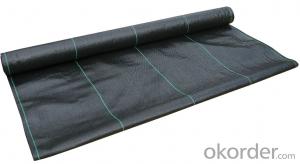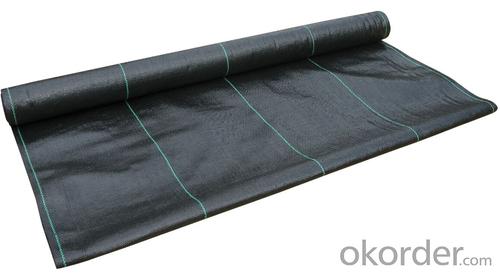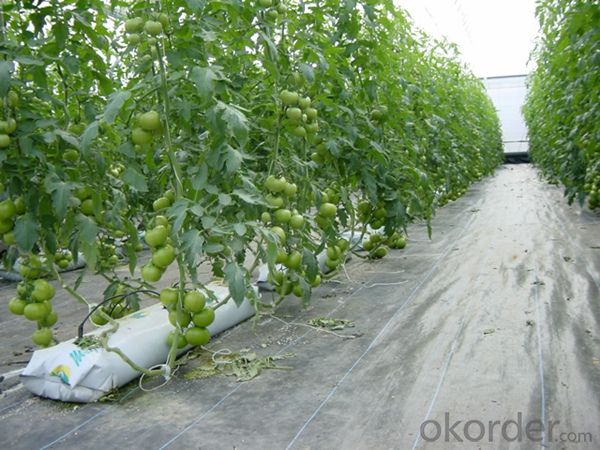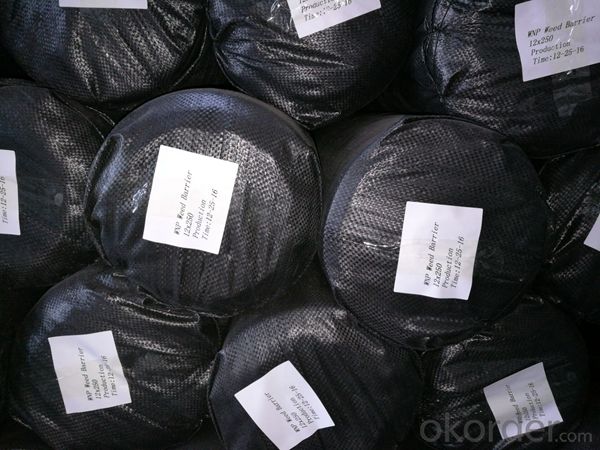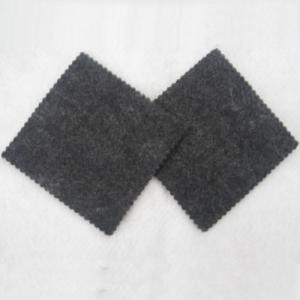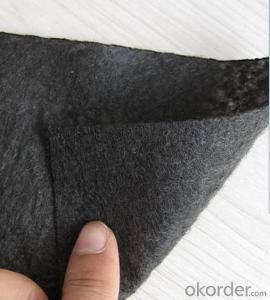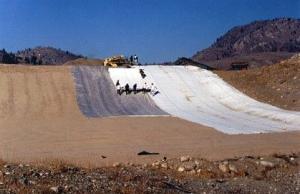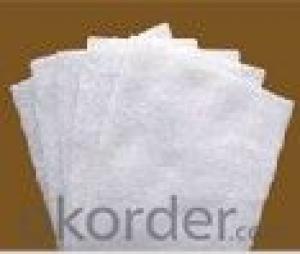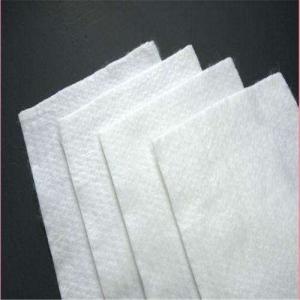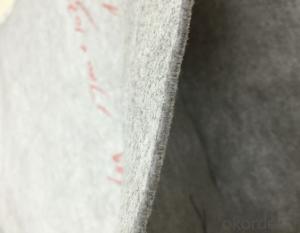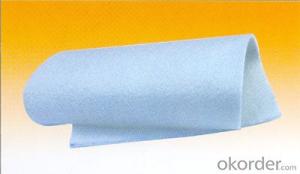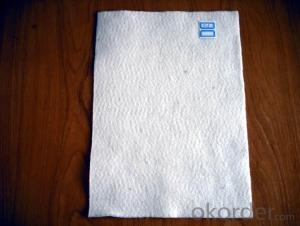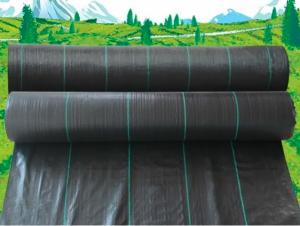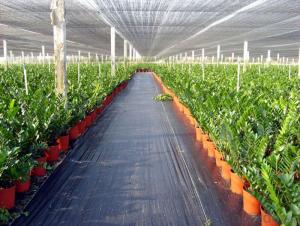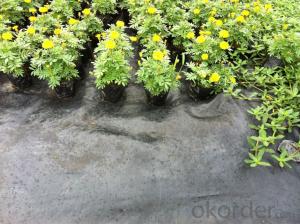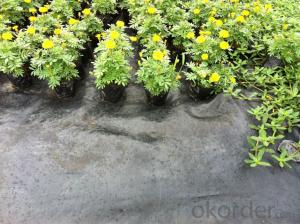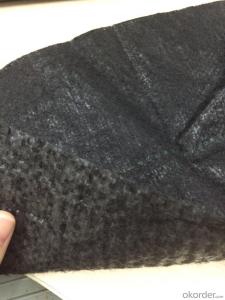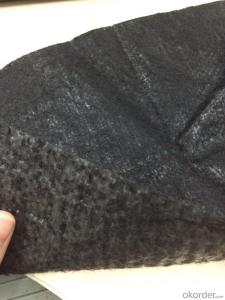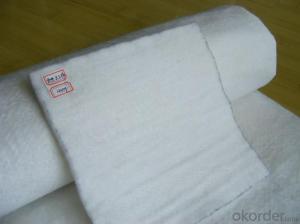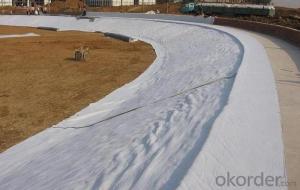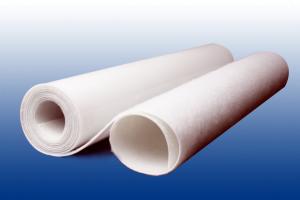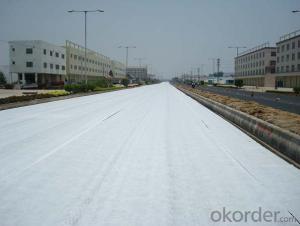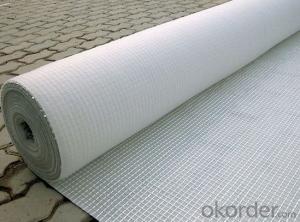PP Woven Geotextile/ Groundcover/ Weed Barrier Fabric
- Loading Port:
- China main port
- Payment Terms:
- TT or LC
- Min Order Qty:
- 5000 m²
- Supply Capability:
- 1000000 m²/month
OKorder Service Pledge
OKorder Financial Service
You Might Also Like
1. Introduction
Geotextiles are composed from synthetic polypropylene/polyester fibres through a mechanical process of needling the fabric and adding, when necessary, a thermo fused process, resulting in a uniform porous structure with excellent tensile strength and chemical deterioration.
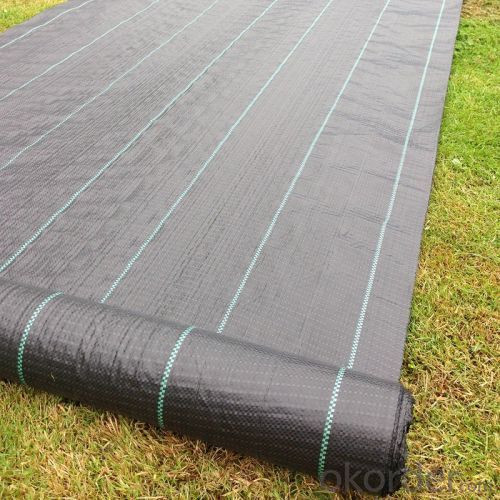
2. Specification
1) Weight / Mass: 75g/m2-400g/m2 .
2) Width: Within 8 m (1m-8m)
3) Length: 50m-100m/roll (as request)
4) Material: PP;PE.
5) Color: Black , white , grey, others
6) Certificate: CE/ISO9001, ISO14001 .
7) Manufacturing method: woven.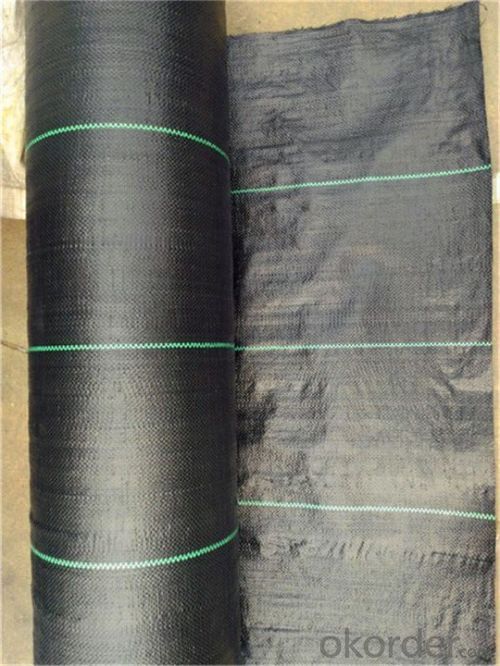
3. Application
Major functions: Separation, filtration, drainage, reinforcement, protection, and liquid barrier
1) Filtration
The filtration layer of the dykes, river canal, seacoast, concrete slope, retaining walls. At the same time of preventing the clay granule from passing, it allows the water and the gas pass through freely.
2) Separation:
The isolation of the railway dregs and the roadbed, roadbed and the soft base, surface of the airdrome and parking lot and the groundsill, different dam materials. It isolates the soil and the gravel of two kinds different granule pathway from the groundsill or other buildings.
3 )Reinforcement:
The highway, railway, soil-stone dam, breakwater, airport, backfill soil of retaining wall, slope protection, etc in which distributes the earth stress, prevents the side-displacement of the earth body and improves the earth body stability.
4 )Protection
It prevents the bank from being washed out, protects the bank and the bottom, prevents the water and soil from being washed away.
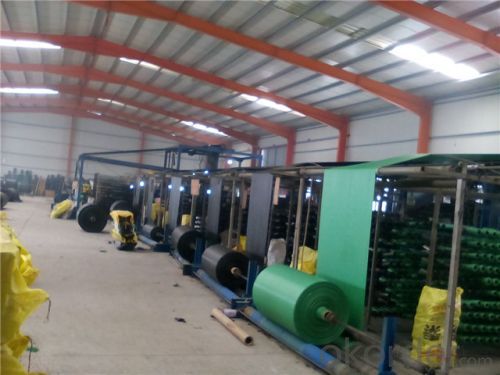
FAQ:
Q1: What is your minimum order quantity?
A:The minimum order quantity is 5000 ,but it is negotiable.
Q2:What is your payment terms?
A: T/T,Western Union,Paypal,L/C...
Waiting to cooperate with you!
- Q: What are the specifications for geotextiles in railway projects?
- The specifications for geotextiles in railway projects typically include factors such as the tensile strength, puncture resistance, elongation properties, and durability of the material. The geotextile should also have the ability to separate and stabilize the soil layers, provide filtration to prevent soil fines from clogging drainage systems, and possess adequate permeability to allow for efficient water drainage. Additionally, geotextiles used in railway projects must meet certain standards for dimensional stability and resistance to environmental factors such as UV radiation and chemical degradation.
- Q: What are the different types of geotextile seams?
- There are several different types of geotextile seams, including overlap seams, butt seams, and sewn seams.
- Q: How do geotextiles improve the performance of asphalt overlays?
- Geotextiles improve the performance of asphalt overlays by providing a separation layer between the existing pavement and the new overlay. This helps to prevent the mixing of materials and the migration of fines, which can lead to premature pavement distress. Geotextiles also enhance the structural integrity of the overlay by distributing loads and reducing stress concentrations, thus increasing the overall lifespan and durability of the pavement.
- Q: Where is the geotextile in the municipal works?
- Conservation, consideration, there is more green and more Chinese geotextile material manufacturers
- Q: Can geotextiles be used for reinforcement of landfills?
- Yes, geotextiles can be used for reinforcement of landfills. They are commonly used as a barrier to prevent soil erosion and provide stability to the landfill slopes. Geotextiles can also help in reducing the potential for leachate seepage and improve the overall performance and longevity of the landfill system.
- Q: How do geotextiles help in subsurface drainage?
- Geotextiles help in subsurface drainage by acting as a filter and separation layer between the soil and the drainage material. They prevent the soil particles from clogging the drainage system while allowing water to pass through, promoting efficient water flow and preventing waterlogging.
- Q: Composite geotextile 20-500-0.5 what it means
- You should not write it right
- Q: How do geotextiles help with soil erosion on slopes?
- Geotextiles help with soil erosion on slopes by providing a protective barrier between the soil and the forces of erosion. They are placed on the slope to stabilize the soil, prevent water runoff, and promote vegetation growth. The geotextiles allow water to pass through while trapping sediment, preventing it from being washed away. This helps retain the soil in place, reducing erosion and maintaining slope stability.
- Q: Road overhaul of the original concrete pavement after shaving asphalt, anti-cracking is geotextile or geogrid more
- Generally used in the geotextile, generally used in soft foundation reinforcement treatment; slope protection; road anti-reflective crack structure layer; drainage system; green belt
Send your message to us
PP Woven Geotextile/ Groundcover/ Weed Barrier Fabric
- Loading Port:
- China main port
- Payment Terms:
- TT or LC
- Min Order Qty:
- 5000 m²
- Supply Capability:
- 1000000 m²/month
OKorder Service Pledge
OKorder Financial Service
Similar products
Hot products
Hot Searches
Related keywords
